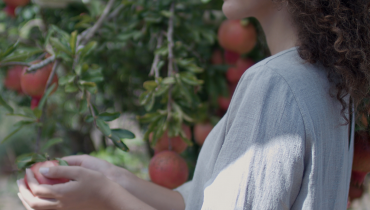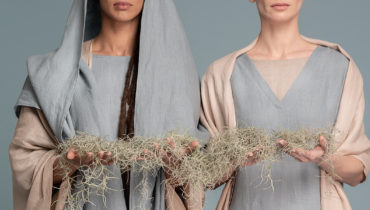Conscious Consumerism and Sustainability in Fashion: Shantima and the Ecology of Clothing >>
Look at the history of fashion: the 18th-century costumes, the 19th, followed by the 30s, the 60s, the 90s. Do you see the gaps between style shifts? Back then cardinal changes in fashion required time. Now fashion transforms significantly not only every year or every season but every month. Aggressive marketing encourages impulsive shopping, urging us to buy in ever-increasing amounts, to purchase mindlessly, to cram more and more clothes into already overstuffed closets, and only after that – to think where to wear it all, what to combine it with, what else and where to buy because the previous apparel is no longer fashionable…
What if we stop this delirious fashion race?
For me, stability, sustainability and balance are of key importance. We already live in a world full of disposable things. That’s why my goal is to create clothes that can last, be worn for years and passed on to the next generations. I’m making clothes beyond fashion craze.
Why is it important to me: because I ask myself one question:
what world will our children live in?
And the answer depends on us now. How much harm will we unconsciously do to the planet in the endless pursuit of unnecessary things? How many chemicals will be used to produce another shirt or skirt destined to gather dust in your closet for several years after you put in on once until you toss it away? We are now giving more thought to the negative consequences of overproduction. And increasingly we opt for environmentally friendly products. Including clothes. How many cubic meters of air will be poisoned to create and paint one roll of bright synthetic fabric?
Shantima: Ecology. Sustainability. Care
Linen is a biodegradable textile, it leaves no “trace” in the environment. If you decide to give up linen clothes, you should not worry about recycling them: the fabric breaks down quickly without leaving any toxins behind.
It is one of the most environmentally friendly materials in the world: the web stuff is made of resilient flax plants that can germinate even in very poor soil and require very little water.
Besides, linen production is practically waste-free. In flax mills the raw materials are used in full for various types of products. Linseed oil, fiber, seeds – everything is of use.
Fabric scraps and leftovers remaining after cutting also come in handy: we send them as samples with every package and deliver them to needlewomen sewing doll clothes and creating fabric crafts.
We don’t create garments that remain unwanted: all Shantima’s clothes are made to order and sent directly to the clients.
For us the quality of fabric and sewing is of utter importance: we want the clothes to serve as long as possible. You will rather get tired of Shantima’s apparel than these clothes would be ruined. Linen becomes only softer and more pleasant to the body after each wash, does not fade or shrink and keeps its chic look.
Shantima collections are created without reference to fashion trends. Shantima’s design is always relevant. Therefore, we do not strive to create and present new collections every season, for us it is more important to create clothes that will not go out of fashion for a long time.
We adhere to the concept of ethical manufacturing: only local (Israeli) employees, average salary and full social package.
We also support fashion shows that popularize sustainable fashion and ethics in textile production.
It’s a mark of pride for us to participate in the shows under the auspices of Fashion Revolution, a global movement calling for a fairer, safer, cleaner, more transparent fashion industry. A movement calling us to think who sews our clothes, from what materials, to what extent production harms the environment, and how to reduce excessive mindless consumption?
Green fashion is a new phenomenon for Israel, but we hope that this concept will be actively supported both in our country and throughout the world.





